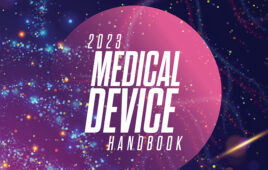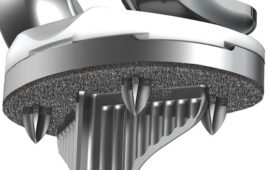As they look to enhance patient comfort, convenience and clinical outcomes with longer wear times, device makers must manage factors such as bodily fluids, skin regeneration, movement and friction. Luckily, there are material and device design solutions.
Deepak Prakash, Vancive Medical Technologies

From material selection to medical device design and development, it’s important to anticipate and address factors such as perspiration and movement to achieve longer wear times. (Photo by Clem Onojeghuo on Unsplash)
Amid demand to deliver better care more efficiently, the healthcare industry is looking for longer wear times for some medical devices, from wound care dressings to wearables. It’s a challenging but not insurmountable objective, given some fundamental factors that are a natural part of living and healing.
Long-term wear, or extended wear, is defined differently for various medical device applications and patient profiles. For example, a wearable patch delivering contraceptive medication might be worn for one week and then replaced. A patch for monitoring glucose in the interstitial fluid might be worn continuously for two weeks. Another monitor may be worn for up to a month. Some wound dressings may need to be changed every two to three days; others once per week.
Whatever the initial baseline, there is a push to extend wear time. Why?
● Quality of life. Patients value independence, freedom of movement, discretion and comfort—all possible when a medical device can be worn for longer periods.
● Clinical outcomes. There are advantages to not disturbing a wound bed as frequently, gathering more data to aid in accurate diagnosis and treatment, improving medication compliance, etc.
● Costs. Longer wear time and remote monitoring require fewer resources, from the number of devices purchased to the labor and overhead to administer care.
Moisture and skin regeneration
One of the greatest impediments to long-term wear is moisture. Bodies perspire. Skin gets oily and continually sheds dead cells, or slough, even under healthy conditions. When wounded, there’s more slough. Healing wounds exudate (sometimes quite a lot). Fluids contacting skin-worn medical devices might come from incontinence or bathing. To make matters more difficult, different body parts (an arm vs. the abdomen vs. the back, etc.) generate fluid at different rates. There is no one-size-fits-all approach to extended-wear moisture management.
That’s why it is important for device OEMs, materials suppliers, converters and healthcare providers to partner in the development of next-generation skin-worn wearables and advanced wound care dressings. Because these devices must accommodate myriad variabilities, multidisciplinary expertise is essential. For example, by working together on wearable device development, material suppliers and OEMs can ensure the moisture-management method of choice (vapor transmission or absorption) is compatible between skin-contact and construction-layer materials.
When it comes to wound dressings, healthcare providers have many options and can weigh wear time with various healing properties. Will the patient do best with an odor- and fluid-absorbing hydrocolloid dressing or a breathable thin transparent film dressing, both of which can be engineered to promote autolytic debridement? Would a soft silicone adhesive be an ideal extended-wear option given a patient’s fragile skin? Or is a dressing impregnated with medical-grade Manuka honey needed to help slough away necrotic tissue and support re-epithelialization?
Movement and friction
Like bodily fluids, the movement of daily activity adds to the challenge of achieving longer wear times in skin-worn medical devices. But this too can be addressed with the latest advances in materials and device design. Thin foams and other highly conformable materials can be applied to bendable body joints and contoured body areas such as the sacrum. Materials can be engineered with just the right amount of static shear to allow for the body’s twists and turns. A wearable device or wound dressing can be constructed with a water-resistant top layer to give it staying power through regular showering. Medical adhesives can be formulated to have enough peel adherence to resist various levels of friction, from the repeated rub of a wheelchair armrest to the jostle of a rambunctious child’s embrace – whatever a patient’s lifestyle demands.
Deepak Prakash is senior director of global marketing at Vancive Medical Technologies, an Avery Dennison business.
The opinions expressed in this blog post are the author’s only and do not necessarily reflect those of Medical Design and Outsourcing or its employees.




